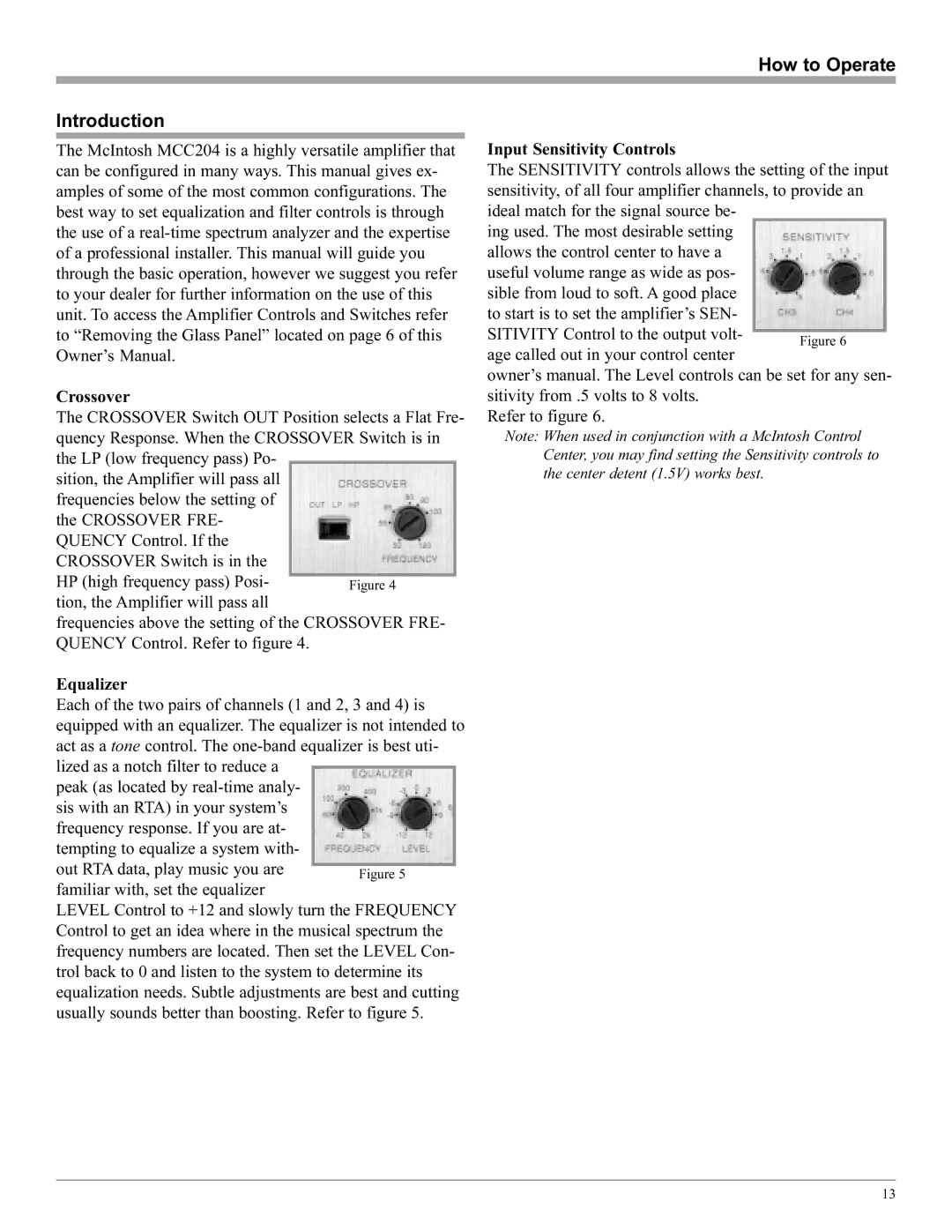
How to Operate
Introduction
The McIntosh MCC204 is a highly versatile amplifier that can be configured in many ways. This manual gives ex- amples of some of the most common configurations. The best way to set equalization and filter controls is through the use of a
Crossover
The CROSSOVER Switch OUT Position selects a Flat Fre- quency Response. When the CROSSOVER Switch is in the LP (low frequency pass) Po-
sition, the Amplifier will pass all frequencies below the setting of the CROSSOVER FRE- QUENCY Control. If the CROSSOVER Switch is in the HP (high frequency pass) Posi- tion, the Amplifier will pass all
frequencies above the setting of the CROSSOVER FRE- QUENCY Control. Refer to figure 4.
Equalizer
Each of the two pairs of channels (1 and 2, 3 and 4) is equipped with an equalizer. The equalizer is not intended to act as a tone control. The
peak (as located by
LEVEL Control to +12 and slowly turn the FREQUENCY Control to get an idea where in the musical spectrum the frequency numbers are located. Then set the LEVEL Con- trol back to 0 and listen to the system to determine its equalization needs. Subtle adjustments are best and cutting usually sounds better than boosting. Refer to figure 5.
Input Sensitivity Controls
The SENSITIVITY controls allows the setting of the input sensitivity, of all four amplifier channels, to provide an ideal match for the signal source be-
ing used. The most desirable setting allows the control center to have a useful volume range as wide as pos- sible from loud to soft. A good place to start is to set the amplifier’s SEN- SITIVITY Control to the output volt- age called out in your control center
owner’s manual. The Level controls can be set for any sen- sitivity from .5 volts to 8 volts.
Refer to figure 6.
Note: When used in conjunction with a McIntosh Control Center, you may find setting the Sensitivity controls to the center detent (1.5V) works best.
13
